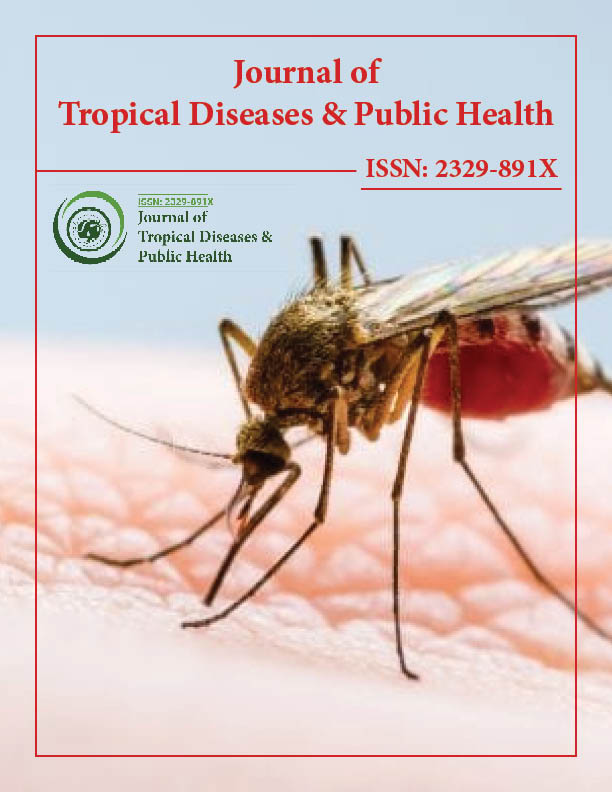Indexed In
- Open J Gate
- Academic Keys
- ResearchBible
- China National Knowledge Infrastructure (CNKI)
- Centre for Agriculture and Biosciences International (CABI)
- RefSeek
- Hamdard University
- EBSCO A-Z
- OCLC- WorldCat
- CABI full text
- Publons
- Geneva Foundation for Medical Education and Research
- Google Scholar
Useful Links
Share This Page
Journal Flyer

Open Access Journals
- Agri and Aquaculture
- Biochemistry
- Bioinformatics & Systems Biology
- Business & Management
- Chemistry
- Clinical Sciences
- Engineering
- Food & Nutrition
- General Science
- Genetics & Molecular Biology
- Immunology & Microbiology
- Medical Sciences
- Neuroscience & Psychology
- Nursing & Health Care
- Pharmaceutical Sciences
Perspective - (2025) Volume 13, Issue 1
Evaluating the Global Burden of Tuberculosis and the Effectiveness of Control Programs
Cobas Valdes*Received: 24-Mar-2025, Manuscript No. JTD-25-29268; Editor assigned: 26-Mar-2025, Pre QC No. JTD-25-29268; Reviewed: 12-Mar-2025, QC No. JTD-25-29268; Revised: 19-Mar-2025, Manuscript No. JTD-25-29268; Published: 26-Mar-2025, DOI: 10.35241/2329-891X.25.13.466
Description
Tuberculosis (TB) is a chronic infectious disease caused primarily by the bacterium Mycobacterium tuberculosis. It most commonly affects the lungs, although it can also impact other parts of the body such as the kidneys, spine, and brain. TB remains one of the top infectious disease killers globally, despite being preventable and, in most cases, curable. According to the World Health Organization (WHO), millions of people fall ill with TB each year, with significant burdens in low- and middle-income countries.
The disease spreads from person to person through the air. When a person with active pulmonary TB coughs, sneezes, or even speaks, they release droplets containing tuberculosis into the air. Inhaling these droplets can infect another person. However, TB is not as contagious as diseases like measles or influenza, and typically requires prolonged exposure for transmission.
In latent TB, the bacteria are present in the body but are inactive and cause no symptoms. Individuals with latent TB are not contagious, but they carry a risk of developing active TB later, especially if their immune system becomes weakened. In active TB, the bacteria multiply and cause symptoms, and the disease can be transmitted to others.
The symptoms of active pulmonary TB include a persistent cough that lasts more than three weeks, chest pain, coughing up blood or sputum, fever, night sweats, fatigue, and unexplained weight loss. TB can also present with symptoms related to the site of infection when it affects organs other than the lungs. For example, TB of the spine can cause back pain, while TB meningitis may lead to headaches and neurological symptoms.
Diagnosis of TB involves several tests. A chest X-ray can reveal abnormalities in the lungs suggestive of TB. Treatment of TB requires a course of multiple antibiotics taken over a period of at least six months. The standard regimen for drug-susceptible TB includes four first-line drugs: isoniazid, rifampicin, pyrazinamide, and ethambutol, typically taken during the initial two-month intensive phase, followed by isoniazid and rifampicin for the four-month continuation phase. It is crucial that patients adhere strictly to the treatment schedule, as incomplete or improper treatment can lead to drug-resistant forms of TB.
Prevention of TB focuses on multiple strategies. Infection control measures in healthcare and community settings such as good ventilation, respiratory hygiene, and the use of personal protective equipment are essential to reduce transmission. Screening and preventive treatment of high-risk groups, including people living with HIV, close contacts of TB patients, and individuals with compromised immune systems, are important components of TB control programs.
Conclusion
Tuberculosis remains a major global health threat, despite being curable and preventable. Its control requires a multifaceted approach that includes early detection, effective treatment, prevention strategies, and addressing social determinants. Global cooperation, investment in healthcare infrastructure, and continued research are critical to ending the TB epidemic and ensuring health and dignity for all affected individuals. TB is closely linked to social determinants of health. Poverty, malnutrition, overcrowded living conditions, and limited access to healthcare significantly increase the risk of TB infection and progression to disease. People living with HIV are particularly vulnerable, as HIV weakens the immune system, making it harder to fight off TB bacteria. In fact, TB is the leading cause of death among people with HIV.
Citation: Valdes C (2025). Evaluating the Global Burden of Tuberculosis and the Effectiveness of Control Programs. J Trop Dis. 13:466.
Copyright: © 2025 Valdes C. This is an open-access article distributed under the terms of the Creative Commons Attribution License, which permits unrestricted use, distribution and reproduction in any medium, provided the original author and source are credited.

